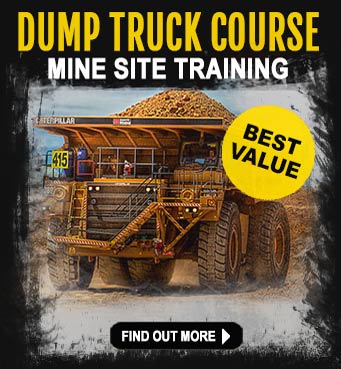No matter what you think of safety training, one thing is for sure and that is education around risk identification and hazard management is absolutely essential for new starters as well as seasoned. long-term workers.
As is often the case, workers who have been on-the-job for years are prone to creating a comfort zone around their workplace. Familiarity creates a temporary mask around the environment where people who have worked the same surroundings for long periods of time.
It becomes commonplace to start to ignore the hazards in a mining environment. No matter whether working above ground or deep in an incline mine, the same principles apply.
Be aware and be safe.
Ignorance and learned behaviour from other workers who exhibit contempt for Work Health and Safety compliance can cause new workers to think taking risks and shortcuts is acceptable. Risk taking may have its advantages because often the task at hand can be shortened, however the consequences of taking risks on a mine site are heightened because of the sheer�number of hazards that exist.
In 2014, the Australian mining industry has been hit hard with mining fatalities. The figures are disturbing to say the least, with one mine in Tasmania reporting 3 fatalities and a Western Australian mining company also reporting 3 deaths.
What’s even more disturbing is most accidents occur where contractors are involved. We have seen fatalities involving haul trucks and light vehicles, underground machinery, moving vehicles and bad communications contributing to the high number of fatalities – but what can be done about this?
Safety training for new employees and repeated refresher courses for existing employees are what the mining industry needs today.
New starters in the industry have no idea of the levels of risk surrounding them with whilst on the job. Despite the Queensland Standard 11 mining induction course, which educates new starters in mining safety and compliance being strictly adhered to, other states have a more casual approach.
In Western Australia, MARCSTA was the recognised training course for the mining industry, although this has almost fizzled out to the point where new workers are not required to hold any formal safety training qualification before commencing employment.
Imagine walking onto a huge Pilbara mine site and not having a clue about Standard Operating Procedures, SLAMS, JSEA’s and risk management. It’s a recipe for disaster – and unfortunately, that is what appears to be happening.
The loss of a human life on a mine site is a tragedy and one that is felt throughout the industry. It should not happen, given the number of safety personnel and managers who are well-versed in mine site safety.
So why do fatalities, injuries and near misses keep occurring in the Australian mining industry? Are managers simply turning a blind eye to safety?
Whatever the future holds for the mining industry, one thing is for certain, there needs to be a total review of the entire safety training and refresher system before more lives are lost.


